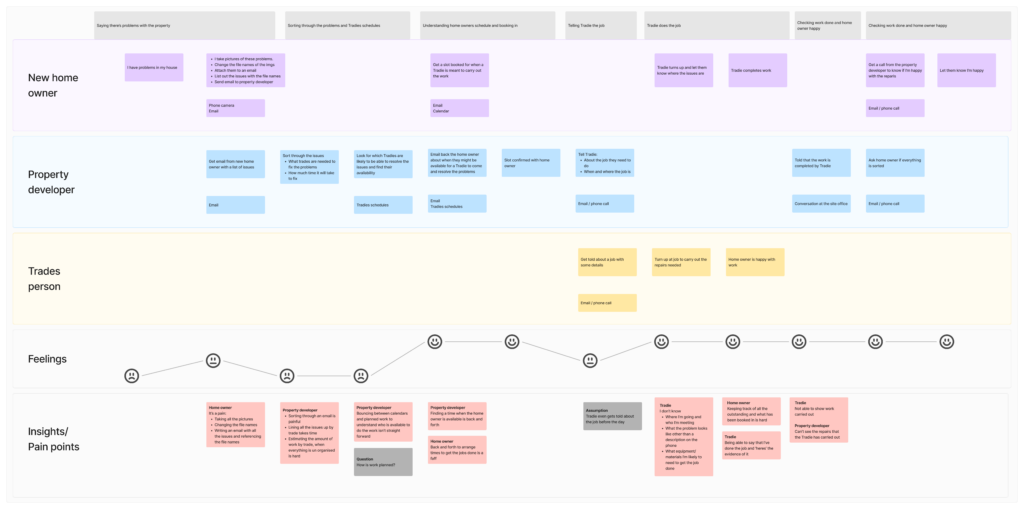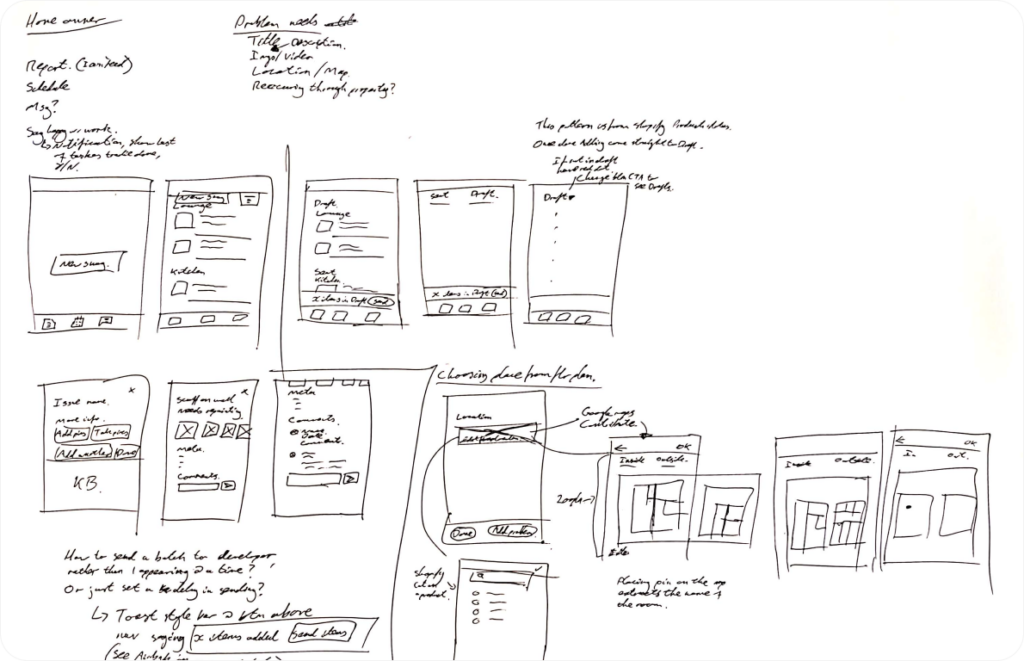After conducting research online, understanding how new homeowners deal with snags and the time and effort it takes to book a tradesperson, I thought it would be best to map out the current process.
Assumptions have been made for each of the customer types for this application. Firstly, we will focus on the experience of homeowners:
- Telling the property developer about issues takes a considerable amount of time and effort.
- Keeping track of all the snags and their progress is like being a project manager.
- Not knowing which tradesperson is meant to be turning up and what they are there to fix is uncomfortable and unnerving.
- It is challenging to communicate their availability to the property developer. Informing them when someone will be home to let a tradesperson in to do repairs can feel like a juggling act.
With that out of the way, I thought it’d be best to visualise what this looks like in a service blueprint. This also includes the other users of the service, but we’ll cover their journey in another blog post.

Overall, we can see that it’s not exactly straightforward for any of the three customer types, and there’s an opportunity to boost each of their experiences.
From here, I concentrated on tackling the homeowners' issues and on how we can streamline the reporting of snags to the property developer, ensuring they can be captured rapidly and easily.

After scribbling away, I felt it would be a good idea to move on to design and prototyping.
Rather than reinvent the wheel, I've used Shopify's Polaris design system.
This video goes through the process of a home owner:
- Recording their first snag.
- Adding images to the snag.
- Illustrating which rooms it's in.
- Having finished snagging, sending them across to the property developer to asses.
As always, I'm open to feedback. If you have thoughts or have suggestions, feel free to message me on LinkedIn.
